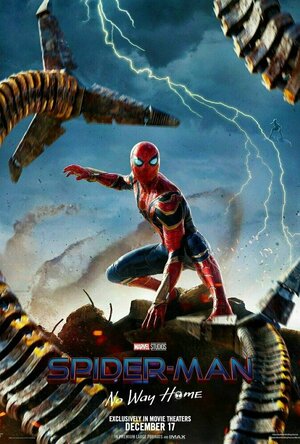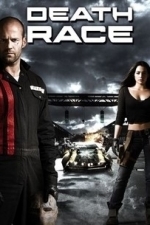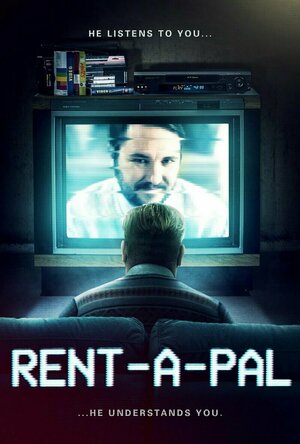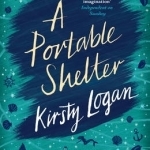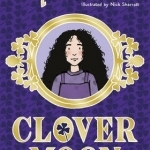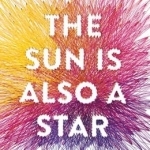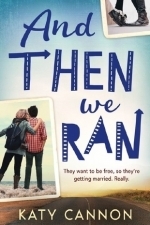Search
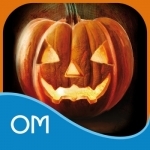
The Halloween Oracle
Lifestyle and Reference
App
Harness the eerie power of Halloween every night of year with this stunning, accurate Oracle deck. ...
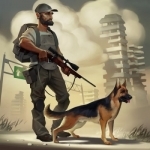
Last Day on Earth: Survival
Games
App
Last Day on Earth is a zombie survival game, where all survivors are driven by one goal: stay alive...
Zombies
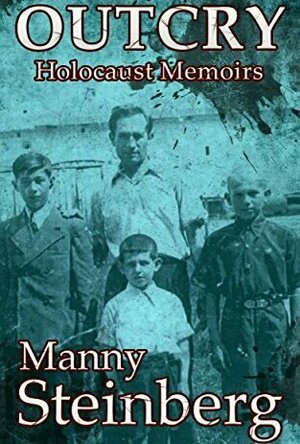
Outcry: Holocaust Memoirs
Book
Manny Steinberg (1925-2015) spent his teens in Nazi concentration camps in Germany, miraculously...
Gareth von Kallenbach (980 KP) rated Spider-Man: No Way Home (2021) in Movies
Dec 15, 2021
Life for Peter Parker (Tom Holland) is complicated thanks to his dual life as Spider-Man and the challenges of being in High School. Unfortunately for him; his best intentions are about to make things much worse in "Spider-Man: No Way Home".
Taking place where "Spider-Man: Far From Home" ended; Peter must deal with his secret identity being leaked by Tabloid Journalist J. Jonah Jameson (J. K. Simmons); and the throngs of people, helicopters, and protestors who follow his every move and camp outside his home.
As if this was not bad enough; being accused of being a murderer has drawn the attention of the authorities which further complicates his life as does returning to a school where everyone knows his identity.
Desperate to get away from the constant scrutiny and observation; Peter seeks out Doctor Strange (Benedict Cumberbatch), and asks him to cast a spell that would make the world forget that Peter Parker is Spider-Man.
Strange agrees but mid-spell Peter requests that there are some exemptions from the spell which include his Girlfriend MJ (Zendaya); his Aunt May (Marisa Tomei); and his friend Ned (Jacob Batalon).
Strange agrees but in doing so; complications arise which allows entrants from other dimensions to enter their realm. Soon Peter is accosted by villains whom he does not know but seem to know him; that is until he is unmasked and they have no idea who this Peter Parker is before them.
As more villains arrive; Peter learns of their fates in their natural dimension and is determined to save them and give them a second chance which puts him at odds with Doctor Strange who says they must go back to whatever fate they had.
What follows is a descent into humor and darkness as Peter despite his best intentions sees the situation go from bad to worse and he must fight to stay true to himself and save the day.
The film is a difficult one to review in the fact that there are so many surprise guests, twists, and turns that it is challenging to not reveal anything but suffice it to say that fans should absolutely enjoy it.
The film takes its time getting to the action as it has a very slow and deliberate climb and Director Jon Watts is confident enough in the characters and premise that he allows ample time for the characters and setting to build and be established before he gets to the action.
While there is considerable fan service in the film; it never once seems like it is pandering and it all fits very well within the story and the MCU and opens up numerous possibilities for the future.
There is a mid-credit scene and a post-credit scene which is basically a trailer and both are very engaging in terms of the possibilities as Marvel has again shown that their plan of interwoven stories and characters continues to deliver and that Spider-Man still remains as popular and engaging as ever.
Taking place where "Spider-Man: Far From Home" ended; Peter must deal with his secret identity being leaked by Tabloid Journalist J. Jonah Jameson (J. K. Simmons); and the throngs of people, helicopters, and protestors who follow his every move and camp outside his home.
As if this was not bad enough; being accused of being a murderer has drawn the attention of the authorities which further complicates his life as does returning to a school where everyone knows his identity.
Desperate to get away from the constant scrutiny and observation; Peter seeks out Doctor Strange (Benedict Cumberbatch), and asks him to cast a spell that would make the world forget that Peter Parker is Spider-Man.
Strange agrees but mid-spell Peter requests that there are some exemptions from the spell which include his Girlfriend MJ (Zendaya); his Aunt May (Marisa Tomei); and his friend Ned (Jacob Batalon).
Strange agrees but in doing so; complications arise which allows entrants from other dimensions to enter their realm. Soon Peter is accosted by villains whom he does not know but seem to know him; that is until he is unmasked and they have no idea who this Peter Parker is before them.
As more villains arrive; Peter learns of their fates in their natural dimension and is determined to save them and give them a second chance which puts him at odds with Doctor Strange who says they must go back to whatever fate they had.
What follows is a descent into humor and darkness as Peter despite his best intentions sees the situation go from bad to worse and he must fight to stay true to himself and save the day.
The film is a difficult one to review in the fact that there are so many surprise guests, twists, and turns that it is challenging to not reveal anything but suffice it to say that fans should absolutely enjoy it.
The film takes its time getting to the action as it has a very slow and deliberate climb and Director Jon Watts is confident enough in the characters and premise that he allows ample time for the characters and setting to build and be established before he gets to the action.
While there is considerable fan service in the film; it never once seems like it is pandering and it all fits very well within the story and the MCU and opens up numerous possibilities for the future.
There is a mid-credit scene and a post-credit scene which is basically a trailer and both are very engaging in terms of the possibilities as Marvel has again shown that their plan of interwoven stories and characters continues to deliver and that Spider-Man still remains as popular and engaging as ever.
Gareth von Kallenbach (980 KP) rated Death Race (2008) in Movies
Aug 14, 2019
In 1975, legendary B-movie producer Roger Corman showed audiences a look at the near future with a biting film that deftly blended action and political commentary and satire. The film was “Death Race 2000” and starred David Carradine and featured a pre-“Rocky” Sylvester Stallone as bitter rivals in a brutal cross country race where finishing first was second only to the amount of death and carnage a driver left in their wake.
The film became a cult hit, and paved the way for films such as “Rollerball”, “Arena”, and countless other films that featured bloodlust sporting events for the masses a la Rome in the age of gladiators at the coliseum. Thirty-three years later, audiences are given the new and upgraded “Death Race” which benefits from a bigger budget with more carnage than the original film that inspired it ever dreamed of.
The film opens with an eerie warning of today’s troubled economic times, stating that the U.S.
economy collapses in 2012 and record unemployment and crime sweep the nation. With prisons overcrowded, corporations run correctional facilities for a profit and soon offer caged matches between inmates for the viewing pleasure of the nation. At first the matches are a huge success but soon lose their appeal to an audience that is eager for even bloodier sport.
In an effort to keep the cash flowing, the Death Race is created which pits convicts against one another in a brutal mix of speed, firepower, and death which in a few years surpasses even the Super Bowl as the most watched sporting event in the world.
Jason Statham stars as Jensen Ames, a former race driver who is framed for the murder of his wife and faces the prospect of life in prison while his daughter is raised by strangers. With the Death Race losing some if its audience, its creator, and warden of the prison, Hennessey (Joan Allen), offers Jensen a solution to both of their problems. If Jensen will pose as the masked Frankenstein for the race and win, he will be granted his freedom. It is learned that the real Frankenstein has finally succumbed to the numerous injuries he has incurred racing, and rather than risk losing his vast legions of fans who drive the ratings, it is easier to replace him than lose him, especially since recent races without Frankenstein had not garnered the same ratings as his past races.
It is explained that should a driver win five death races, they will be set free. Since Frankenstein has won four races, all Jensen has to do is win the race and stay alive to earn his freedom. Jensen is faced with an menacing list of adversaries including the deadly Machine Gun Joe (Tyrese Gibson), who is the biggest threat to Jensen with an absolute hatred for Frankenstein. Gun Joe is a cold-blooded killer who wants nothing more than two more race wins to earn his freedom and will stop at nothing to get it.
Jensen is assisted by the talented Coach (Ian McShane), who dispenses wisdom while overseeing the crew that outfits Jensen’s suped up, armor-plated, and very heavily armed racer. Assigned to ride with Jensen as his Navigator is Case (Natalie Martinez), a female prisoner who, like many of her fellow navigators, sees the race as a chance to earn their freedom and other special perks which makes risking their lives a worthwhile endeavor.
As the race unfolds in three stages, Jensen is tasked with not only surviving the threats Machine Gun Joe and the other racers aim his way, but surviving the twisted scheme that has him in its grasp.
The action of the film is fast, brutal, and unforgiving and is easily the highlight of the film. Sadly there are plenty of scenes with stiff and uninspired characters, numerous plot holes and leaps of logic, and clichés that bog the film down.
Statham is his usual soft talking hard man, a character he has made a career out of playing in such films as the “Crank” and the “Transporter” series. But unlike those films, he is not given much material to work with here. Statham has done solid work in the past but Jensen is a paper thin character who never fully given a chance to develop nor be embraced by the audience.
The same is true for the rest of the cast, a talented ensemble left to languish in want of better material. The film is directed by Paul W.S. Anderson of the “Resident Evil” series who once again shows that he has an eye for action, but still has issues with pacing and unsympathetic characters. This is a shame as the premise of the film is solid, but unlike the original, lacks the social and political commentary needed to balance the carnage and mayhem.
With a little more time in shop and tinkering, this could have been a solid action film, instead it stalls at the starting line badly in need of a tune up.
The film became a cult hit, and paved the way for films such as “Rollerball”, “Arena”, and countless other films that featured bloodlust sporting events for the masses a la Rome in the age of gladiators at the coliseum. Thirty-three years later, audiences are given the new and upgraded “Death Race” which benefits from a bigger budget with more carnage than the original film that inspired it ever dreamed of.
The film opens with an eerie warning of today’s troubled economic times, stating that the U.S.
economy collapses in 2012 and record unemployment and crime sweep the nation. With prisons overcrowded, corporations run correctional facilities for a profit and soon offer caged matches between inmates for the viewing pleasure of the nation. At first the matches are a huge success but soon lose their appeal to an audience that is eager for even bloodier sport.
In an effort to keep the cash flowing, the Death Race is created which pits convicts against one another in a brutal mix of speed, firepower, and death which in a few years surpasses even the Super Bowl as the most watched sporting event in the world.
Jason Statham stars as Jensen Ames, a former race driver who is framed for the murder of his wife and faces the prospect of life in prison while his daughter is raised by strangers. With the Death Race losing some if its audience, its creator, and warden of the prison, Hennessey (Joan Allen), offers Jensen a solution to both of their problems. If Jensen will pose as the masked Frankenstein for the race and win, he will be granted his freedom. It is learned that the real Frankenstein has finally succumbed to the numerous injuries he has incurred racing, and rather than risk losing his vast legions of fans who drive the ratings, it is easier to replace him than lose him, especially since recent races without Frankenstein had not garnered the same ratings as his past races.
It is explained that should a driver win five death races, they will be set free. Since Frankenstein has won four races, all Jensen has to do is win the race and stay alive to earn his freedom. Jensen is faced with an menacing list of adversaries including the deadly Machine Gun Joe (Tyrese Gibson), who is the biggest threat to Jensen with an absolute hatred for Frankenstein. Gun Joe is a cold-blooded killer who wants nothing more than two more race wins to earn his freedom and will stop at nothing to get it.
Jensen is assisted by the talented Coach (Ian McShane), who dispenses wisdom while overseeing the crew that outfits Jensen’s suped up, armor-plated, and very heavily armed racer. Assigned to ride with Jensen as his Navigator is Case (Natalie Martinez), a female prisoner who, like many of her fellow navigators, sees the race as a chance to earn their freedom and other special perks which makes risking their lives a worthwhile endeavor.
As the race unfolds in three stages, Jensen is tasked with not only surviving the threats Machine Gun Joe and the other racers aim his way, but surviving the twisted scheme that has him in its grasp.
The action of the film is fast, brutal, and unforgiving and is easily the highlight of the film. Sadly there are plenty of scenes with stiff and uninspired characters, numerous plot holes and leaps of logic, and clichés that bog the film down.
Statham is his usual soft talking hard man, a character he has made a career out of playing in such films as the “Crank” and the “Transporter” series. But unlike those films, he is not given much material to work with here. Statham has done solid work in the past but Jensen is a paper thin character who never fully given a chance to develop nor be embraced by the audience.
The same is true for the rest of the cast, a talented ensemble left to languish in want of better material. The film is directed by Paul W.S. Anderson of the “Resident Evil” series who once again shows that he has an eye for action, but still has issues with pacing and unsympathetic characters. This is a shame as the premise of the film is solid, but unlike the original, lacks the social and political commentary needed to balance the carnage and mayhem.
With a little more time in shop and tinkering, this could have been a solid action film, instead it stalls at the starting line badly in need of a tune up.
Lee (2222 KP) rated Rent-A-Pal (2020) in Movies
Nov 2, 2020
If by any chance you’re feeling nostalgic for the days of VHS videotapes, then Rent-A-Pal is here to satisfy that craving. Set in Denver during 1990, VHS video features rather heavily throughout Rent-A-Pal, from the retro font used in the opening titles to the closeups of videotapes being inserted into a VCR, the internal mechanism engaging with the tape as it prepares to play.
The person responsible for firing up the VCR is David (Brian Landis Folkins), who is settling down to view the latest set of video profiles he’s received from dating agency Video Rendezvous, of which he is a member. David lives in the basement flat of his mum’s house, who has dementia. His father died ten years ago, meaning David is now the sole carer for his mother. And David is lonely, painfully lonely. When he calls Video Rendezvous for an update on any profile matches, he’s told that he has still not received any interest from potential partners who have viewed his profile. He is however urged to come into their office and record a new video profile, as his current one is now 6 months old.
When David sits down in front of the camera to record his new profile, he comes across well, showing just how much of a nice guy he is – a caregiver who simply wants the chance to care for a soulmate, sharing life within a loving relationship. You really do feel for him, certain that the genuine sincerity in his video will finally land him the date he so desperately needs and deserves. That is until the cameraman informs him that he has completely overrun the thirty-second limit allocated to male video profiles and that he is going to have to do it again. The shortened version David then delivers under pressure is rushed, with David now coming across as awkward and creepy, and your heart drops, knowing that he’s likely to remain single for a while longer yet. But then, as he’s having his credit card swiped by the dating agency yet again, David notices an interesting VHS sitting in the nearby bargain bin, titled Rent A Pal, and decides to buy it.
Back in his basement, David puts the Rent-A-Pal video into his VCR and presses play. He’s greeted by Andy (Will Wheaton), a cheery-looking man in a colourful knitted tank top. Andy talks of becoming best friends with David, asking him questions and leaving a pause to allow David to answer. Those pauses aren’t always long enough though, resulting in David being cut off mid-sentence, and the responses from Andy don’t always match the answers that David has given him either. But, desperate for a friend, David persists with this strange form of interaction.
We see that after repeat viewings of the tape David has managed to perfect his responses so that the conversation flows between him and Andy as if it were a real-life conversation. There are parts of the video where Andy plays cards with the viewer, takes a selfie with his back to the camera so that the viewer can be in it, and he and David are able to have the kind of deep and meaningful conversations that only two very good friends would have. It’s a rather lengthy and elaborate videotape, with certain sections earning a revisit should David ever feel the need to have a specific conversation about a certain aspect of his life. Eventually, we as the audience begin to wonder how much of this ‘relationship’ is real or imagined, with some of the questions or replies from Andy beginning to sound eerily close to being very specific and personal to David.
In his real life, David finally gets a lucky break with the dating agency, landing a date with Lisa (Amy Rutledge). Lisa also works in the care sector, and she comes across as a very nice person too. Once again you find yourself willing David to do well and thankfully, they do hit it off. But from the moment David brings Lisa down to his basement and you see that somebody is likely to sit on the VCR remote, you just know things are due to take a dark turn.
Watching David as he interacts with Andy for hours on end, day after day is surprisingly riveting. I was completely engrossed in him and his life as I waited and hoped he might catch a break. For much of the movie, I was just mesmerised by the wonderful performances from the entire cast, thoroughly enjoying the believable, likeable characters they portrayed. But, Rent-A-Pal is billed as a horror movie, so when things do eventually take a turn right at the end, we get a fast-paced, gory ending which felt somewhat disappointing, proving to be the weakest aspect of a movie which really did impress me overall.
The person responsible for firing up the VCR is David (Brian Landis Folkins), who is settling down to view the latest set of video profiles he’s received from dating agency Video Rendezvous, of which he is a member. David lives in the basement flat of his mum’s house, who has dementia. His father died ten years ago, meaning David is now the sole carer for his mother. And David is lonely, painfully lonely. When he calls Video Rendezvous for an update on any profile matches, he’s told that he has still not received any interest from potential partners who have viewed his profile. He is however urged to come into their office and record a new video profile, as his current one is now 6 months old.
When David sits down in front of the camera to record his new profile, he comes across well, showing just how much of a nice guy he is – a caregiver who simply wants the chance to care for a soulmate, sharing life within a loving relationship. You really do feel for him, certain that the genuine sincerity in his video will finally land him the date he so desperately needs and deserves. That is until the cameraman informs him that he has completely overrun the thirty-second limit allocated to male video profiles and that he is going to have to do it again. The shortened version David then delivers under pressure is rushed, with David now coming across as awkward and creepy, and your heart drops, knowing that he’s likely to remain single for a while longer yet. But then, as he’s having his credit card swiped by the dating agency yet again, David notices an interesting VHS sitting in the nearby bargain bin, titled Rent A Pal, and decides to buy it.
Back in his basement, David puts the Rent-A-Pal video into his VCR and presses play. He’s greeted by Andy (Will Wheaton), a cheery-looking man in a colourful knitted tank top. Andy talks of becoming best friends with David, asking him questions and leaving a pause to allow David to answer. Those pauses aren’t always long enough though, resulting in David being cut off mid-sentence, and the responses from Andy don’t always match the answers that David has given him either. But, desperate for a friend, David persists with this strange form of interaction.
We see that after repeat viewings of the tape David has managed to perfect his responses so that the conversation flows between him and Andy as if it were a real-life conversation. There are parts of the video where Andy plays cards with the viewer, takes a selfie with his back to the camera so that the viewer can be in it, and he and David are able to have the kind of deep and meaningful conversations that only two very good friends would have. It’s a rather lengthy and elaborate videotape, with certain sections earning a revisit should David ever feel the need to have a specific conversation about a certain aspect of his life. Eventually, we as the audience begin to wonder how much of this ‘relationship’ is real or imagined, with some of the questions or replies from Andy beginning to sound eerily close to being very specific and personal to David.
In his real life, David finally gets a lucky break with the dating agency, landing a date with Lisa (Amy Rutledge). Lisa also works in the care sector, and she comes across as a very nice person too. Once again you find yourself willing David to do well and thankfully, they do hit it off. But from the moment David brings Lisa down to his basement and you see that somebody is likely to sit on the VCR remote, you just know things are due to take a dark turn.
Watching David as he interacts with Andy for hours on end, day after day is surprisingly riveting. I was completely engrossed in him and his life as I waited and hoped he might catch a break. For much of the movie, I was just mesmerised by the wonderful performances from the entire cast, thoroughly enjoying the believable, likeable characters they portrayed. But, Rent-A-Pal is billed as a horror movie, so when things do eventually take a turn right at the end, we get a fast-paced, gory ending which felt somewhat disappointing, proving to be the weakest aspect of a movie which really did impress me overall.
Eilidh G Clark (177 KP) rated A Portable Shelter in Books
May 13, 2017
‘…there’s no other way to give you the truth except to hide it in a story and let you find your own way inside.’
‘…there’s no other way to give you the truth except to hide it in a story and let you find your own way inside.’
Kirsty Logan’s first collection of short stories, The Rental Heart and Other Fairytales, published by Salt in 2014, won the Polari First Book Prize in 2015. A Portable Shelter is her second collection. Set in a small cottage in the rural north coast of Scotland, Ruth and Liska are expecting their first child. The couple believe that their unborn baby will have a better chance of survival away from the harshness of suburban life. They make a pact with one another, that they will only ever tell their child the truth. Yet while Liska is asleep or Ruth is at work, each whispers secret stories to their unborn child. Delving into fantastical tales about people from their past and re-telling stories that span from generation to generation, the couple unfold the horrors of the real world. Whilst these tales, laced in myth and legend, and fattened with the magic of the imagination, demonstrate the art of oral storytelling, Logan reaches further to show the reader why storytelling is important.
While this book is primarily a collection of short stories, its novel like structure frames each story with a preceding monologue from either Ruth or Liska. The monologues offer delightful morsels of description that bring the harshness of Mother Nature into the safety of the couple’s bedroom, “right now our home is speaking to you. The walls creak their approval in the wind. The rain applauds on the roof. The lighthouse beam swoops, swoops, swoops. The tide breathes loud and slow like a giant. If you listen carefully, perhaps you can even hear the moon hum.” The pace of these sentences, combined with the delicacy of language demonstrates Logan’s skill at describing the sublime spirit of the natural world, which brings the narrative to life.
Most impressive though, is Logan’s poetic language and carefully crafted sentences which create the most beautiful imagery. In ‘Flinch,’ for example – James is a fisherman struggling with his identity, yet his affiliation with the land is locked into his first-person point of view where the reader gets to closely experience what he sees, “The sky is pinkish-grey like the insides of shells. Speckled bonxies wheel overhead. Seals loll on the rocks, fat as kings. The rising mist is cool and milky.” Any of these lines could easily be arranged into a poem and with sentences that are squeezed tight; they create a wonderful poetic rhythm. Logan uses this technique throughout her novel, demonstrating the precision and craft in her work. There are definite similarities in her writing style to fellow Scottish novelist and poet Jenni Fagan. Both authors use rich language, which is well crafted and smattered with vernacular. Furthermore, combining this with the reoccurring theme of identity, the oral storytelling tradition, landscape, folklore, and myth, it is clear to see why these authors contribute to the growing canon in Scottish literature.
This is a book that I will read over and over again because I know that in each reading, I will find something new. A Portable Shelter, I feel, deserves a place on my ‘keep’ book shelf.
A Portable Shelter, Kirsty Logan, London: Vintage, 2015
Kirsty Logan’s first collection of short stories, The Rental Heart and Other Fairytales, published by Salt in 2014, won the Polari First Book Prize in 2015. A Portable Shelter is her second collection. Set in a small cottage in the rural north coast of Scotland, Ruth and Liska are expecting their first child. The couple believe that their unborn baby will have a better chance of survival away from the harshness of suburban life. They make a pact with one another, that they will only ever tell their child the truth. Yet while Liska is asleep or Ruth is at work, each whispers secret stories to their unborn child. Delving into fantastical tales about people from their past and re-telling stories that span from generation to generation, the couple unfold the horrors of the real world. Whilst these tales, laced in myth and legend, and fattened with the magic of the imagination, demonstrate the art of oral storytelling, Logan reaches further to show the reader why storytelling is important.
While this book is primarily a collection of short stories, its novel like structure frames each story with a preceding monologue from either Ruth or Liska. The monologues offer delightful morsels of description that bring the harshness of Mother Nature into the safety of the couple’s bedroom, “right now our home is speaking to you. The walls creak their approval in the wind. The rain applauds on the roof. The lighthouse beam swoops, swoops, swoops. The tide breathes loud and slow like a giant. If you listen carefully, perhaps you can even hear the moon hum.” The pace of these sentences, combined with the delicacy of language demonstrates Logan’s skill at describing the sublime spirit of the natural world, which brings the narrative to life.
Most impressive though, is Logan’s poetic language and carefully crafted sentences which create the most beautiful imagery. In ‘Flinch,’ for example – James is a fisherman struggling with his identity, yet his affiliation with the land is locked into his first-person point of view where the reader gets to closely experience what he sees, “The sky is pinkish-grey like the insides of shells. Speckled bonxies wheel overhead. Seals loll on the rocks, fat as kings. The rising mist is cool and milky.” Any of these lines could easily be arranged into a poem and with sentences that are squeezed tight; they create a wonderful poetic rhythm. Logan uses this technique throughout her novel, demonstrating the precision and craft in her work. There are definite similarities in her writing style to fellow Scottish novelist and poet Jenni Fagan. Both authors use rich language, which is well crafted and smattered with vernacular. Furthermore, combining this with the reoccurring theme of identity, the oral storytelling tradition, landscape, folklore, and myth, it is clear to see why these authors contribute to the growing canon in Scottish literature.
This is a book that I will read over and over again because I know that in each reading, I will find something new. A Portable Shelter, I feel, deserves a place on my ‘keep’ book shelf.
A Portable Shelter, Kirsty Logan, London: Vintage, 2015
Hazel (1853 KP) rated Clover Moon in Books
May 24, 2017
A Victorian Story
This eBook was provided by the publisher via NetGalley in exchange for an honest review
Although now in her seventies, the Nation’s favourite children’s author, Dame Jacqueline Wilson, is continuing to write after surpassing one hundred novels. Many children (mostly girls) grow up reading her stories, myself being amongst that number. Even my sister, who hated reading, purchased a number of her books. It has been well over a decade since I last read a Jacqueline Wilson, however after seeing her latest novel was available for review, I thought I would give it a go.
Clover Moon is set in poverty-stricken Victorian London, where eleven-year-old Clover, the eldest of six siblings, lives with her father and stepmother. Like many stepmother’s in children’s literature, Clover’s treats her like a slave – a position she is destined to stay in unless she gets a job in a factory. With no school to attend, Clover becomes a second mother to her younger brother’s and sisters, yet nothing can prepare her for the devastating impact a wave of Scarlet Fever brings. With only an old doll maker who cares about her, Clover is desperate to get out of her situation; so after a chance meeting with an artist who tells her about a home for destitute girls, Clover decides to seek out the help and life she deserves.
Although only eleven, Clover has the responsibilities of someone of a more mature age. It is hard to imagine sending a child out to work, or trusting them to look after a newborn baby. Children reading this book will learn the difference between their lives and the life of a child in the 1800s.
As always, Jacqueline Wilson gives her main character a happy ending – although in this instance it still remains a bit uncertain. Despite the horrible circumstances, Wilson manages to pump her story full of enthusiastic optimism, thus portraying Clover as a strong, determined heroine.
Most of Jacqueline Wilson’s earlier books were set in the present day; there were still unhappy situations, but the settings were based on ideas the reader would be familiar with. In the case of Clover Moon, unless children have been educated about the poor in Victorian England, it is unlikely that they will be able to fully comprehend Clover’s predicament. As a result, the book is more suitable for young teenagers than the usual target audience of eight to twelve year olds.
Comparing my memories of Jacqueline Wilson books I read as a child with her latest publication, Clover Moon felt like something different; a new direction. As I have not read any of her work between the early 2000s and now, I am not sure when this change occurred, but it feels as though Wilson is delving deeper into her main character’s thoughts and feelings, and creating a more insightful storyline. On the other hand, I may simply be more intuitive as an adult than I was a child.
Although Clover Moon did not turn out to be the style of writing I was expecting I thoroughly enjoyed it. In fact, this difference made it possible to distance myself from the author’s renown, and treat it as an individual story. Clover is an admirable character who, through her narration, provides both an entertaining story and brief historical education. Fans of Jacqueline Wilson will not be disappointed with this latest publication; and if you are a new reader, Clover Moon is a great place to start.
Although now in her seventies, the Nation’s favourite children’s author, Dame Jacqueline Wilson, is continuing to write after surpassing one hundred novels. Many children (mostly girls) grow up reading her stories, myself being amongst that number. Even my sister, who hated reading, purchased a number of her books. It has been well over a decade since I last read a Jacqueline Wilson, however after seeing her latest novel was available for review, I thought I would give it a go.
Clover Moon is set in poverty-stricken Victorian London, where eleven-year-old Clover, the eldest of six siblings, lives with her father and stepmother. Like many stepmother’s in children’s literature, Clover’s treats her like a slave – a position she is destined to stay in unless she gets a job in a factory. With no school to attend, Clover becomes a second mother to her younger brother’s and sisters, yet nothing can prepare her for the devastating impact a wave of Scarlet Fever brings. With only an old doll maker who cares about her, Clover is desperate to get out of her situation; so after a chance meeting with an artist who tells her about a home for destitute girls, Clover decides to seek out the help and life she deserves.
Although only eleven, Clover has the responsibilities of someone of a more mature age. It is hard to imagine sending a child out to work, or trusting them to look after a newborn baby. Children reading this book will learn the difference between their lives and the life of a child in the 1800s.
As always, Jacqueline Wilson gives her main character a happy ending – although in this instance it still remains a bit uncertain. Despite the horrible circumstances, Wilson manages to pump her story full of enthusiastic optimism, thus portraying Clover as a strong, determined heroine.
Most of Jacqueline Wilson’s earlier books were set in the present day; there were still unhappy situations, but the settings were based on ideas the reader would be familiar with. In the case of Clover Moon, unless children have been educated about the poor in Victorian England, it is unlikely that they will be able to fully comprehend Clover’s predicament. As a result, the book is more suitable for young teenagers than the usual target audience of eight to twelve year olds.
Comparing my memories of Jacqueline Wilson books I read as a child with her latest publication, Clover Moon felt like something different; a new direction. As I have not read any of her work between the early 2000s and now, I am not sure when this change occurred, but it feels as though Wilson is delving deeper into her main character’s thoughts and feelings, and creating a more insightful storyline. On the other hand, I may simply be more intuitive as an adult than I was a child.
Although Clover Moon did not turn out to be the style of writing I was expecting I thoroughly enjoyed it. In fact, this difference made it possible to distance myself from the author’s renown, and treat it as an individual story. Clover is an admirable character who, through her narration, provides both an entertaining story and brief historical education. Fans of Jacqueline Wilson will not be disappointed with this latest publication; and if you are a new reader, Clover Moon is a great place to start.
Hazel (1853 KP) rated The Sun is Also a Star in Books
May 24, 2017
Science Vs Fate
This eBook was provided by the publisher via NetGalley in exchange for an honest review
Following the success of her debut novel, Nicola Yoon’s second book, The Sun is also a Star, has been highly anticipated amongst young adult readers. In twelve hours time, senior student, Natasha will be deported to Jamaica. Her family are undocumented immigrants and can no longer remain living in the United States. Despite her best efforts, Natasha has not succeeded in getting the courts to change their mind, and now there is barely any time left. Today is the last day before things change forever; little does she know how significant this day will be.
Only half the story is told from Natasha’s point of view. The remainder is narrated by Daniel, a Korean American whose parents’ high expectations have resulted in an interview with the prestigious university, Yale. With several hours to go, Daniel is wandering around New York when a chain of events leads him into saving Natasha’s life – literally. Instantly infatuated with Natasha, Daniel attempts to convince her that their meeting is fate. Yet, Natasha’s factual, scientific brain refuses to concede, leaving Daniel with less than 12 hours to convince her otherwise.
At heart, The Sun is also a Star, is a romance novel, however it contains so many other themes. Both characters are from immigrant families whose histories greatly impact on their current and future lives. Natasha’s father’s impractical dreams have lead to this disastrous consequence, whereas Daniel’s parents are adamant that he become a doctor and avoid the poverty they grew up with. Naturally, the teens are unhappy with the way their futures are being plotted; Natasha more so, however the poetry-loving Daniel wishes he could become who he wants to be rather than who he is told to be.
Although being deep thinkers, Natasha and Daniel are total opposites, yet something is pulling them together. Whether it is love or the simply the way the universe works, the character’s break all ethnic stereotypes as their relationship races from strangers to something much more intimate.
Nicola Yoon has experienced first hand growing up in both Jamaica and New York, therefore readers can assume that Natasha’s experiences are largely based on the author’s own – presumably not including the deportation. Society generally tends to assume all people from Jamaica or Korea fit into a certain box – liking certain music, academic success, wearing particular fashion – yet Daniel and Natasha prove otherwise.
Despite the narrative being condensed into one day in the life of these two characters, there is so much going on. Firstly there is the rushing around New York trying to get to appointments on time and so forth, however the content in between these scenes will keep the reader thinking for hours. Daniel’s poetical theories about love and Natasha’s scientific explanation about the universe will make you question your own philosophy about the world. Whether either or neither of them are correct, what they do prove is the difference a single day can make.
The Sun is also a Star has a similar vibe to novels by Rainbow Rowell, David Levithan and John Green – some of the top Young Adult authors of the current era. It is a story that will pull at your heartstrings while your logical brain refuses to see chance of a happy ending. With no way of guessing what the universe has in store, this book will keep you thoroughly engaged from beginning to end.
Following the success of her debut novel, Nicola Yoon’s second book, The Sun is also a Star, has been highly anticipated amongst young adult readers. In twelve hours time, senior student, Natasha will be deported to Jamaica. Her family are undocumented immigrants and can no longer remain living in the United States. Despite her best efforts, Natasha has not succeeded in getting the courts to change their mind, and now there is barely any time left. Today is the last day before things change forever; little does she know how significant this day will be.
Only half the story is told from Natasha’s point of view. The remainder is narrated by Daniel, a Korean American whose parents’ high expectations have resulted in an interview with the prestigious university, Yale. With several hours to go, Daniel is wandering around New York when a chain of events leads him into saving Natasha’s life – literally. Instantly infatuated with Natasha, Daniel attempts to convince her that their meeting is fate. Yet, Natasha’s factual, scientific brain refuses to concede, leaving Daniel with less than 12 hours to convince her otherwise.
At heart, The Sun is also a Star, is a romance novel, however it contains so many other themes. Both characters are from immigrant families whose histories greatly impact on their current and future lives. Natasha’s father’s impractical dreams have lead to this disastrous consequence, whereas Daniel’s parents are adamant that he become a doctor and avoid the poverty they grew up with. Naturally, the teens are unhappy with the way their futures are being plotted; Natasha more so, however the poetry-loving Daniel wishes he could become who he wants to be rather than who he is told to be.
Although being deep thinkers, Natasha and Daniel are total opposites, yet something is pulling them together. Whether it is love or the simply the way the universe works, the character’s break all ethnic stereotypes as their relationship races from strangers to something much more intimate.
Nicola Yoon has experienced first hand growing up in both Jamaica and New York, therefore readers can assume that Natasha’s experiences are largely based on the author’s own – presumably not including the deportation. Society generally tends to assume all people from Jamaica or Korea fit into a certain box – liking certain music, academic success, wearing particular fashion – yet Daniel and Natasha prove otherwise.
Despite the narrative being condensed into one day in the life of these two characters, there is so much going on. Firstly there is the rushing around New York trying to get to appointments on time and so forth, however the content in between these scenes will keep the reader thinking for hours. Daniel’s poetical theories about love and Natasha’s scientific explanation about the universe will make you question your own philosophy about the world. Whether either or neither of them are correct, what they do prove is the difference a single day can make.
The Sun is also a Star has a similar vibe to novels by Rainbow Rowell, David Levithan and John Green – some of the top Young Adult authors of the current era. It is a story that will pull at your heartstrings while your logical brain refuses to see chance of a happy ending. With no way of guessing what the universe has in store, this book will keep you thoroughly engaged from beginning to end.
Hazel (1853 KP) rated And Then We Ran in Books
Jun 23, 2017
Drastic Decision Making
I received this book for free through Goodreads First Reads.
Have you ever felt so desperate to achieve your dreams that you would do anything, no matter how crazy, to reach them? Seventeen-year-old Megan dreams of becoming a professional photographer, however, her parents have other ideas. And Then We Ran by Katy Cannon is a Young Adult novel about learning to be yourself and realising your dreams.
Megan’s older sister died in a terrible accident the year before she completed her A Levels. Now, Megan is at the same stage and is fed up of trying to live up to her sister’s memory. Forced to study subjects she does not care for and pressurised into applying to Oxbridge, Megan feels she only has one option left. Her grandmother’s will stipulates that on her 21st birthday or when she gets married, a little flat in London will become hers. Unable to wait another four years, Megan decides marriage is the only way forward.
Two characters narrate And Then We Ran, the second being an old friend of Megan’s. Elliott has given up all hope of going to university to study archaeology and no longer has any ambitions for the future. Then, Megan approaches him with a proposal that could change his life forever. If Elliott agrees to elope with her to Gretna Green, he could live with her in London and study at UCL. So, with a new future developing before their eyes, the two coalesce and begin to develop their clandestine plan.
Naturally, it is not a simple procedure; they cannot get married on the spur of the moment. Careful planning and a long month later, they are ready to go ahead with their plan, however, things outside of their control seem intent on preventing their marriage. From delayed trains to inclement weather, Megan and Elliott determinedly carry on until, after a more circuitous route, they arrive at their destination. But, that does not necessarily result in their happy ever after.
Getting married for a chance at freedom seems a rather peculiar idea, however, you have to appreciate how determined they are to achieve their dreams. Applying to university is a decision that can alter your entire future, so it is understandable how angry Megan feels that her parents are dictating where she goes and what she studies. And The We Ran is an encouraging book that shows two teenagers seriously contemplating their future and making decisions that will make them happy, rather than doing what everyone else expects.
Although it is a fun story, Megan is not the most relatable character. To begin with, it is hard to connect with her outgoing personality, unlike Elliott who is more reserved and introverted. But, once the story gets going, Megan’s façade begins to slip, revealing that she is not much different from other teenagers with hopes and dreams for the future.
And Then We Ran is not the most realistic of contemporary stories, but it is enjoyable and makes us as readers question the methods of Megan and Elliott’s journey to freedom. Most significantly, it highlights the importance of learning and being who you are, rather than whom other people want you to be. Finally, this story emphasises that there are more than one way of achieving your dreams.
Have you ever felt so desperate to achieve your dreams that you would do anything, no matter how crazy, to reach them? Seventeen-year-old Megan dreams of becoming a professional photographer, however, her parents have other ideas. And Then We Ran by Katy Cannon is a Young Adult novel about learning to be yourself and realising your dreams.
Megan’s older sister died in a terrible accident the year before she completed her A Levels. Now, Megan is at the same stage and is fed up of trying to live up to her sister’s memory. Forced to study subjects she does not care for and pressurised into applying to Oxbridge, Megan feels she only has one option left. Her grandmother’s will stipulates that on her 21st birthday or when she gets married, a little flat in London will become hers. Unable to wait another four years, Megan decides marriage is the only way forward.
Two characters narrate And Then We Ran, the second being an old friend of Megan’s. Elliott has given up all hope of going to university to study archaeology and no longer has any ambitions for the future. Then, Megan approaches him with a proposal that could change his life forever. If Elliott agrees to elope with her to Gretna Green, he could live with her in London and study at UCL. So, with a new future developing before their eyes, the two coalesce and begin to develop their clandestine plan.
Naturally, it is not a simple procedure; they cannot get married on the spur of the moment. Careful planning and a long month later, they are ready to go ahead with their plan, however, things outside of their control seem intent on preventing their marriage. From delayed trains to inclement weather, Megan and Elliott determinedly carry on until, after a more circuitous route, they arrive at their destination. But, that does not necessarily result in their happy ever after.
Getting married for a chance at freedom seems a rather peculiar idea, however, you have to appreciate how determined they are to achieve their dreams. Applying to university is a decision that can alter your entire future, so it is understandable how angry Megan feels that her parents are dictating where she goes and what she studies. And The We Ran is an encouraging book that shows two teenagers seriously contemplating their future and making decisions that will make them happy, rather than doing what everyone else expects.
Although it is a fun story, Megan is not the most relatable character. To begin with, it is hard to connect with her outgoing personality, unlike Elliott who is more reserved and introverted. But, once the story gets going, Megan’s façade begins to slip, revealing that she is not much different from other teenagers with hopes and dreams for the future.
And Then We Ran is not the most realistic of contemporary stories, but it is enjoyable and makes us as readers question the methods of Megan and Elliott’s journey to freedom. Most significantly, it highlights the importance of learning and being who you are, rather than whom other people want you to be. Finally, this story emphasises that there are more than one way of achieving your dreams.
